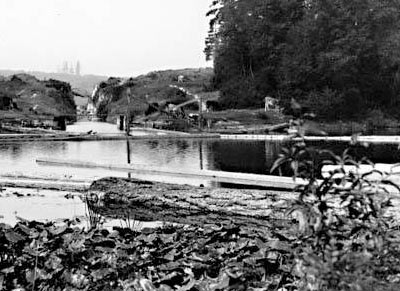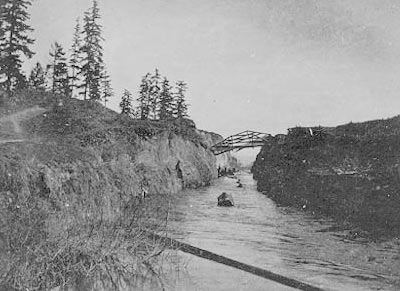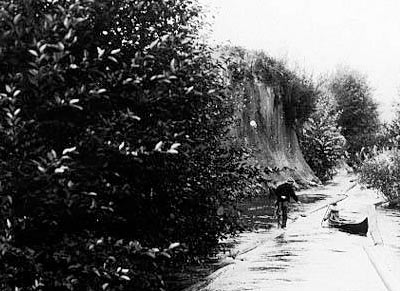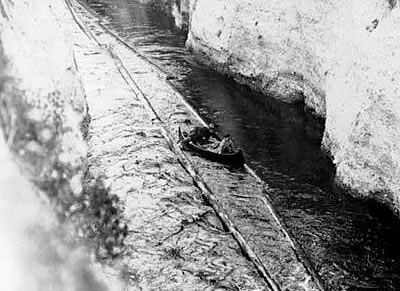RESOURCES
Links to external websites do not constitute endorsement by WSDOT of the linked websites or the opinions, information, products or services contained therein.
The lands surrounding Lake Washington offered a wealth of resources, including minerals such as coal and seemingly endless forests full of timber. One route to the port in Seattle followed the Duwamish and Black rivers, located south of downtown, to Lake Washington. The other passed through Lake Union just north of downtown and over the Montlake Portage across an isthmus between today's University District and Capitol Hill. Both routes had long been used by Indians, who relied heavily on water routes to travel in part due to the many hills and the thick forests covering much of the land.
Early efforts to develop transportation systems focused on the rivers, but the portage also drew attention. In about 1860, Harvey Pike (1841-1897) began digging a canal, with a shovel and pick, on land he owned. The enormity and difficulty of the task stymied his efforts, but he did not give up on the idea. In 1871 Pike, along with J. R. Robbins, J. H. Fairchild, O. Humason, and James McNaught (1852-1919) incorporated the Lake Washington Canal Company to build a ditch to allow logs to pass through.
In 1885, a new company, the Lake Washington Improvement Company, hired Chinese immigrant laborers, probably through the Wa Chong Company, a labor contractor, to dig a ditch wide enough to allow logs to pass between the lakes. The ditch took advantage of the natural drop in elevation between the lakes to pull the water, and the logs, through it. A set of locks controlled the water flow. This ditch was located north of Pike's Canal Reserve from the Union City plat, about where SR 520 is today. Visit HistoryLink.org to learn more about the Montlake Ditch.




